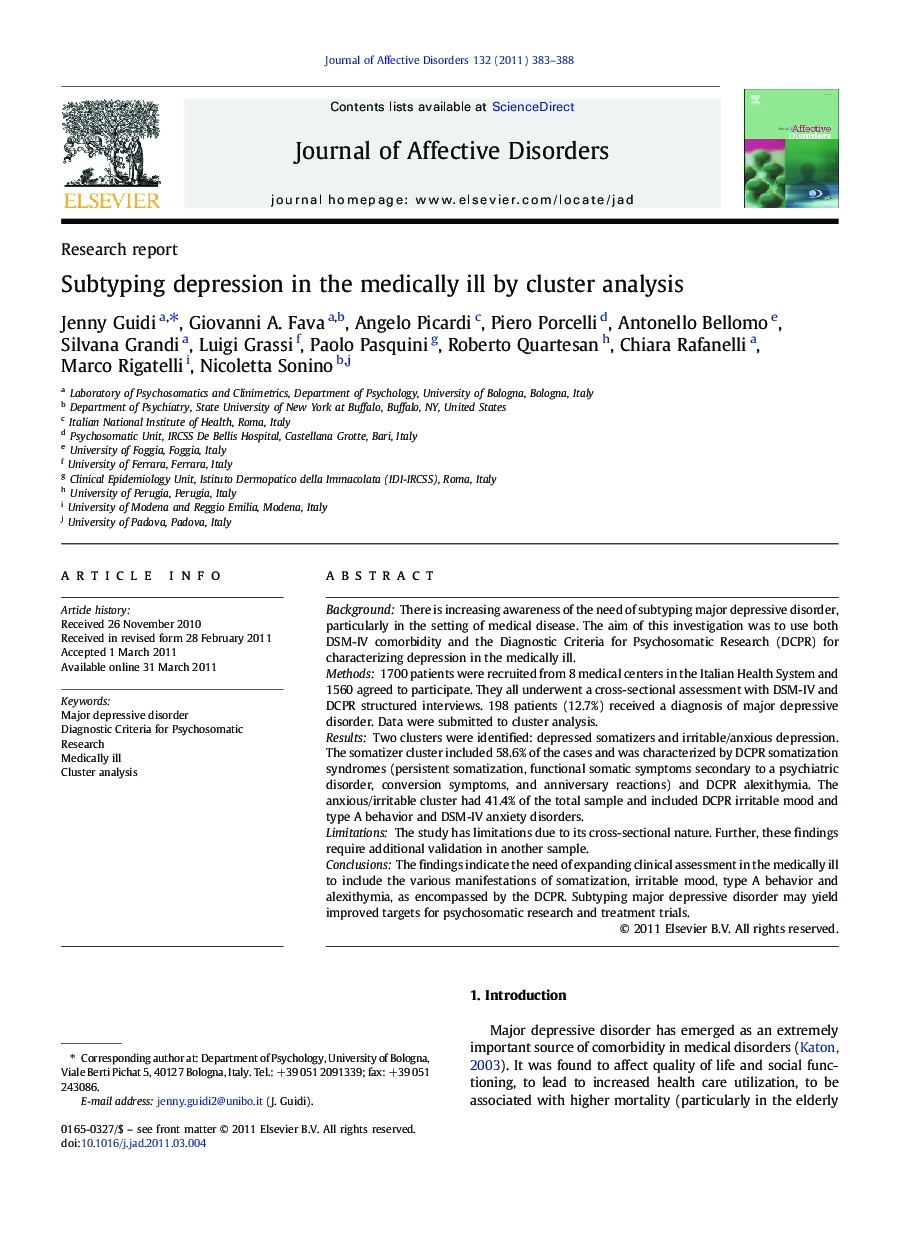| Article ID | Journal | Published Year | Pages | File Type |
|---|---|---|---|---|
| 4186458 | Journal of Affective Disorders | 2011 | 6 Pages |
BackgroundThere is increasing awareness of the need of subtyping major depressive disorder, particularly in the setting of medical disease. The aim of this investigation was to use both DSM-IV comorbidity and the Diagnostic Criteria for Psychosomatic Research (DCPR) for characterizing depression in the medically ill.Methods1700 patients were recruited from 8 medical centers in the Italian Health System and 1560 agreed to participate. They all underwent a cross-sectional assessment with DSM-IV and DCPR structured interviews. 198 patients (12.7%) received a diagnosis of major depressive disorder. Data were submitted to cluster analysis.ResultsTwo clusters were identified: depressed somatizers and irritable/anxious depression. The somatizer cluster included 58.6% of the cases and was characterized by DCPR somatization syndromes (persistent somatization, functional somatic symptoms secondary to a psychiatric disorder, conversion symptoms, and anniversary reactions) and DCPR alexithymia. The anxious/irritable cluster had 41.4% of the total sample and included DCPR irritable mood and type A behavior and DSM-IV anxiety disorders.LimitationsThe study has limitations due to its cross-sectional nature. Further, these findings require additional validation in another sample.ConclusionsThe findings indicate the need of expanding clinical assessment in the medically ill to include the various manifestations of somatization, irritable mood, type A behavior and alexithymia, as encompassed by the DCPR. Subtyping major depressive disorder may yield improved targets for psychosomatic research and treatment trials.
